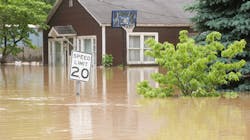SMART warnings could protect communities at risk from flooding
A new study finds that engaging communities in developing a real-time early warning system could help to reduce the often-devastating impact of flooding on people and property, according to a press release form the University of Birmingham.
Publishing their findings in Natural Hazards and Earth System Sciences, an international research team believes that integrating science, policy and local community-led approaches will help to create environmental decisions that better fit the local context.
The researchers say that using a SMART approach helps policy makers to expose communities’ vulnerability and risk, by using a set of fundamental principles:
- Shared understanding of risks ensuring every group of people in a community is represented and a wide range of data collection methods are used.
- Monitoring risks and establishing warning systems that build trust and exchange critical risk information - helping to maintain the forecasting system.
- Building Awareness through training and capacity development activities which embed understanding of real-time weather and flood alert information.
- Indicating pre-planning Response actions on Time with comprehensive disaster management and evacuation plans based on the alert produced by the EWS.
Flash floods are becoming more frequent and damaging to the lives and property of vulnerable people, but the researchers have outlined an approach to engage with those living in such areas will help to better signal impending risk from flooding.
The research team claims that combining meteorological data with information on how people live and work in such regions will help disaster risk managers, hydrologists, and engineers design better ways of raising the alarm ahead of major floods.
“Better engaging with communities and analyzing social factors identified by the community at risk — for example, illegal settlement beside riverbanks or slums — will help those driving policy to better understand the risks posed by these hydrometeorological extremes and plan flood response and mitigation which provides communities with improved protection,” said Tahmina Yasmin, co-author and postdoctoral research fellow at the University of Birmingham.


